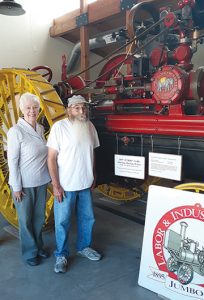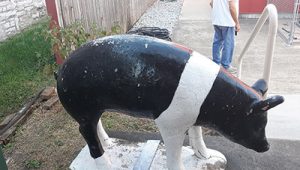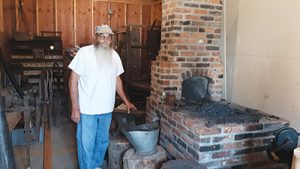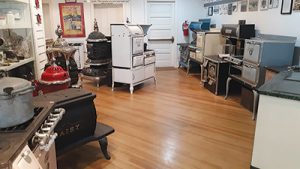
By ROBERT KELLY
Correspondent
Belleville, IL — One of the nation’s most significant museums dedicated to the role of labor unions in American industry is tucked away in a block on the edge of Belleville’s Historic District, near downtown.
The Belleville Labor & Industry Museum, 123 North Church Street, has amassed more than 10,000 old photographs and 2,500 other historic items and artifacts during its relatively short existence.
The museum was opened to the public in a converted historic old house in 2002, yet many area residents still aren’t aware that it’s there, said Judy Belleville. She is a long-time volunteer in local preservation activities, including many hours at the museum, and also is a former member of the Belleville Historic Preservation Commission.
SMALL, BUT IMPORTANT
“We are a small, but important, museum,” Belleville said.

Even Chicago’s famous Museum of Science and Industry has recognized the importance of the little museum in Belleville. The internationally known Chicago museum has donated some items and money to the Belleville museum to help with Belleville’s collections and facilitate the transfer a 19th century southern Illinois blacksmith shop to the grounds of the Belleville museum.
Belleville said a priority for the museum — with its collections almost at capacity — is to attract more visitors to learn about and enjoy Belleville’s rich Labor history.
‘EVEN PEOPLE IN BELLEVILLE DON’T KNOW ABOUT IT. THAT’S A SHAME’
Russell Schleicher, another museum volunteer, works as a blacksmith at the blacksmith shop. The shop was re-built on-site with union labor and is behind the main museum building.

The shop re-creates a blacksmith shop that was established in Millstadt in 1856 by Peter Oldendorph. He operated it consistently until shutting it down in 1926. The Museum of Science and Industry then acquired and moved the shuttered shop to Chicago, before transferring it brick by brick to Belleville several months ago.
Schleicher said he was proud to ply the blacksmithing trade there on the weekends and during tours of the Belleville museum. He is a retired union employee who worked as a civilian at Scott Air Force Base.
He took up blacksmithing as a hobby and part-time job several years ago. He noted that more people should come to see him at the museum.
“Even people in Belleville don’t know about it, and that’s a shame,” Schleicher said.
OTHER FEATURES
Other features of the museum include:

- An exhibit honoring Belleville’s long history of stove-making. At one time, Belleville employed hundreds of workers producing all varieties of stoves. Nearly 30 of them are on display, including antique wood-burning stoves. Today, the city still has four stove factories and remains a major supplier of America’s stoves.
- A large 19th century steam engine, nicknamed “Jumbo.” It takes up much of the floor space in the museum annex, and it still runs for special events. It was built in 1895 at Harrison Machine Works in Belleville and purchased by the museum from the Henry Ford Museum, The engine once powered belt drives for many purposes and could be driven to wherever it was needed.
- Old typesetting equipment and other memorabilia from a number of newspapers published at Belleville over the years. Belleville once had seven German language newspapers in addition to several English language newspapers. The city is still home to the daily Belleville News-Democrat.
- A St. Louis National Stockyards exhibit. The 650-acre terminal livestock facility was directly across the Mississippi River from St. Louis. More than 30 railroads once converged there at National City. The St. Louis National Stockyards and its packing houses employed more than 14,000 people in its peak years. The stockyards were established in 1873 and finally closed in 1997.
FOUR SECTIONS
The museum is divided into four sections:
- Industrial Hall – A permanent display recognizing the importance of Belleville’s stove industry and pattern-making.
- Union Hall – A reference library of documents and books chronicling the Labor Movements of working people and their role in creating the American middle class.
- Archives and Library – A collection of historic images and U.S. patents awarded to Belleville area residents since 1850.
- Artifacts – Southern Illinois industry exhibits ranging from casting and machining to glass making, brewing, brick making and stencil making.
The museum is open every Saturday from 10 a.m. to 2 p.m. or by appointment by calling 618- 222-9430. Admission is free.
For more information, including how to donate to the museum, visit its website at laborandindustrymuseum.org.


